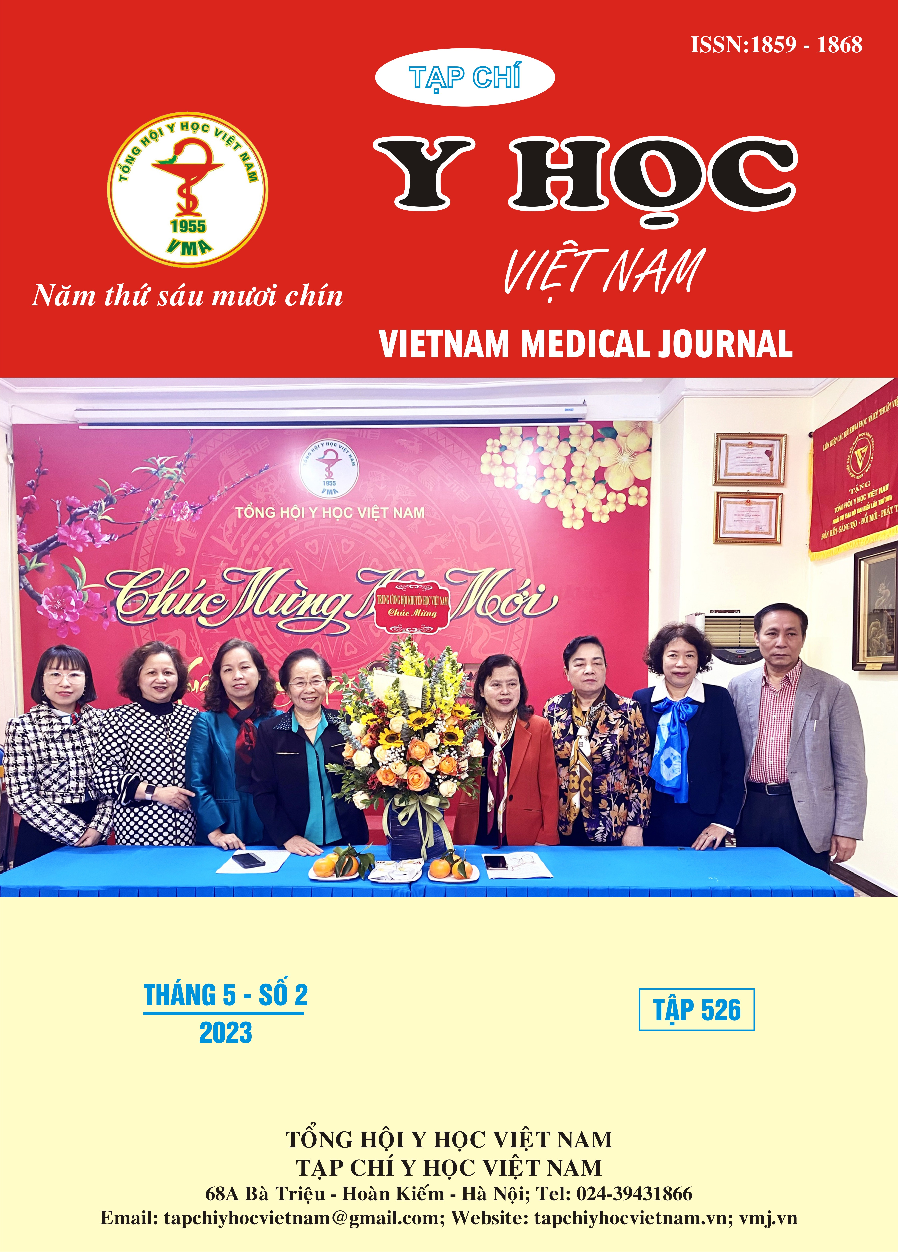STUDY ON CULTURAL CONDITIONS MYXOCOCCUS STIPITATUS GL41 FOR ANTIMICROBIAL ACTIVITY
Main Article Content
Abstract
Background: Myxococcus sp. is an important genus that produces more than 20% of the bioactive secondary compounds from Myxobacteria. Therefore, the bioactive screening approach, then fractionation and purification of compounds are a core strategy in discovering potent secondary metabolites. Objectives: (i) Evaluate the antimicrobial activity of strain GL41 isolated from soil; (ii) Species identification of strain GL41; (iii) Investigation of media composition and fermentation conditions to obtain extracts showing the highest antimicrobial activity and (iv) Identification of active fractions. Methods: The antimicrobial activity was evaluated by the diffusion well method. Identification of strain GL41 by morphology, biochemistry and 16S rDNA sequence. The microdilution method is used to survey the environment and fermentation conditions of mycobacteria strain GL41 based on the results of MIC determination. Identify the active fraction by bioautography. Results: Strain GL41 exhibited unusual antimicrobial activity with minimal inhibitory concentration values on MSSA, MRSA, S. faecalis, C. albicans and A. niger is 1 µg/mL. The 16S rDNA sequence similarity is 99.93% to Myxococcus stipitatus. Investigation of fermentation conditions showed the highest antimicrobial activity on VY/3 medium, pH 7.6, 35oC, culture time 10 days and adsorbent resin addition on the 4th day. Two bioactive fractions (Rf = 0.63 and Rf = 0.72) showed the presence of potential compounds.
Article Details
Keywords
Myxococcus stipitatus; antimicrobial.
References
2. Shimkets L. J., Dworkin M. , Reichenbach H. (2006), "The myxobacteria", The prokaryotes, Springer, pp. 31-115.
3. Bader C. D., Panter F. , Müller R. (2020), "In depth natural product discovery-Myxobacterial strains that provided multiple secondary metabolites", Biotechnol Adv. 39, pp. 107480.
4. Brenner D. J., Krieg N. R., Staley J. T. et al. (2005), Bergey's Manual® of Systematic Bacteriology: Volume Two: The Proteobacteria (Part C), Springer.
5. Gerth K., Pradella S., Perlova O. et al. (2003), "Myxobacteria: proficient producers of novel natural products with various biological activities—past and future biotechnological aspects with the focus on the genus Sorangium", J Biotechnol. 106 (2-3), pp. 233-253.
6. Humphries R. M., Ambler J., Mitchell S. L. et al. (2018), "CLSI methods development and standardization working group best practices for evaluation of antimicrobial susceptibility tests", J Clin Microbiol. 56 (4), pp. e01934-01917.
7. Huntley S., Kneip S., Treuner-Lange A. et al. (2013), "Complete genome sequence of Myxococcus stipitatus strain DSM 14675, a fruiting myxobacterium", Genome announcements. 1 (2), pp. e00100-00113.
8. Muñoz-Dorado J., Marcos-Torres F. J., García-Bravo E. et al. (2016), "Myxobacteria: moving, killing, feeding, and surviving together", Front Microbiol. 7, pp. 781.


